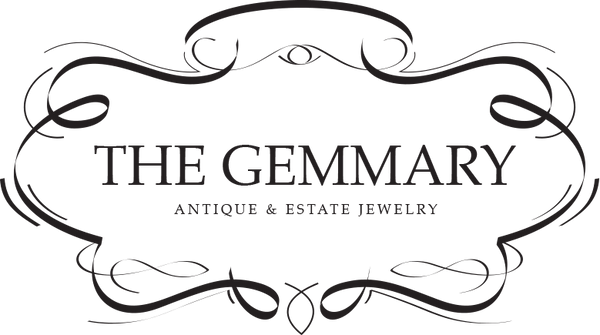
Jewelry of the Victorian Aesthetic Period
Share
by Kat Paulick
Though Queen Victoria mourned her husband throughout the late 19th century, the life of the average British woman was more vivacious than ever. The Industrial Revolution led to the creation of a thriving middle class, and women became increasingly active in politics and the workforce. Increased free time led to a boom in the entertainment industry, with actors and actresses becoming trendsetters in fashion. Women began participating in leisure activities such as bicycling, tennis, and golf. The heavy, dark, and brooding jewelry of the Grand Era no longer fit with the modern woman's lifestyle, and new styles emerged. The years 1885-1901 are classified as the Aesthetic Period of Victorian jewelry, a movement primarily defined by the rejection of past conventions.

Brass necklaces from the late 1890s. Image: The Gemmary
As women’s wardrobes shifted to accommodate newly active lifestyles, the jewelry industry saw a sharp drop in demand. Women wore very little jewelry during the day. When they did don their jewels, stud earrings were preferred to dangling ones. Instead of one large brooch, women often wore multiple tiny pins sprinkled across their bodices. Much of the jewelry designed during this era was lighter and more delicate than that of the Grand Period, and women favored soft curves and more natural coloring. Designers strove for an airier look, reducing the amount of metal in settings.

1880s Amethyst Necklace. Image: The Gemmary
Often, jewelry of this period served dual purposes. Necklaces were designed to be fitted to a frame and worn as tiaras. Brooches were equipped with the hardware to be converted into pendants. The solitaire diamond engagement ring, popularized by Tiffany & Co. in 1886, remains a classic style that is still in demand today. A fashionable piece for the recent bride was the honeymoon pin, a brooch featuring a flower or a bee (symbolizing nectar or honey) on a crescent (representing the moon). The Aesthetic Period also saw the emergence of platinum in jewelry-making. With an extremely high melting point, its uses were limited to appliqué until the invention of the oxyacetylene torch in 1895, which enabled jewelers to create solid platinum jewelry.

Enamel and Pearl Honeymoon Pin c. 1900. Image: The Gemmary
Besides platinum, gold and silver remained the most popular metals for jewelry making. Preferred gemstones included diamonds, pearls, amethyst, garnet, turquoise, emerald, peridot, and sapphire. Rose, old mine, and cabochon cuts remained en fashion, along with the round, faceted Old European cut. Sporting motifs, including the horseshoe – a good luck charm popularized by Prince Edward’s love for horse racing, grew in popularity.

Rose Cut Bohemian Garnet Jewelry. Image: The Gemmary
Mizpah jewelry was a nod to the sentimentality of the Romantic Period. Mizpah refers to the Old Testament verse Genesis 31:49, “And Mizpah; for he said, The Lord watch between me and thee, when we are absent from one another,” and the word was featured on brooches, rings, and pendants.

Bronze Memorial Statue of Queen Victoria. Image: Shutterstock
The Aesthetic Movement was not limited to jewelry. Painters, writers, architects, and designers of the mid-to-late 19th century reacted to the materialism of the Industrial Revolution by focusing on beauty for its own sake. Coinciding with the Belle Époque, a time of regional peace and optimism in greater Europe, the late years of the Victorian Era were seen as a golden age of European civilization. Victoria died in 1901, making her the longest-reigning monarch in British history to date. The era produced a wide variety of beautiful jewelry in various styles that suit any occasion, enabling you to wear a piece of this incredible time in history.
